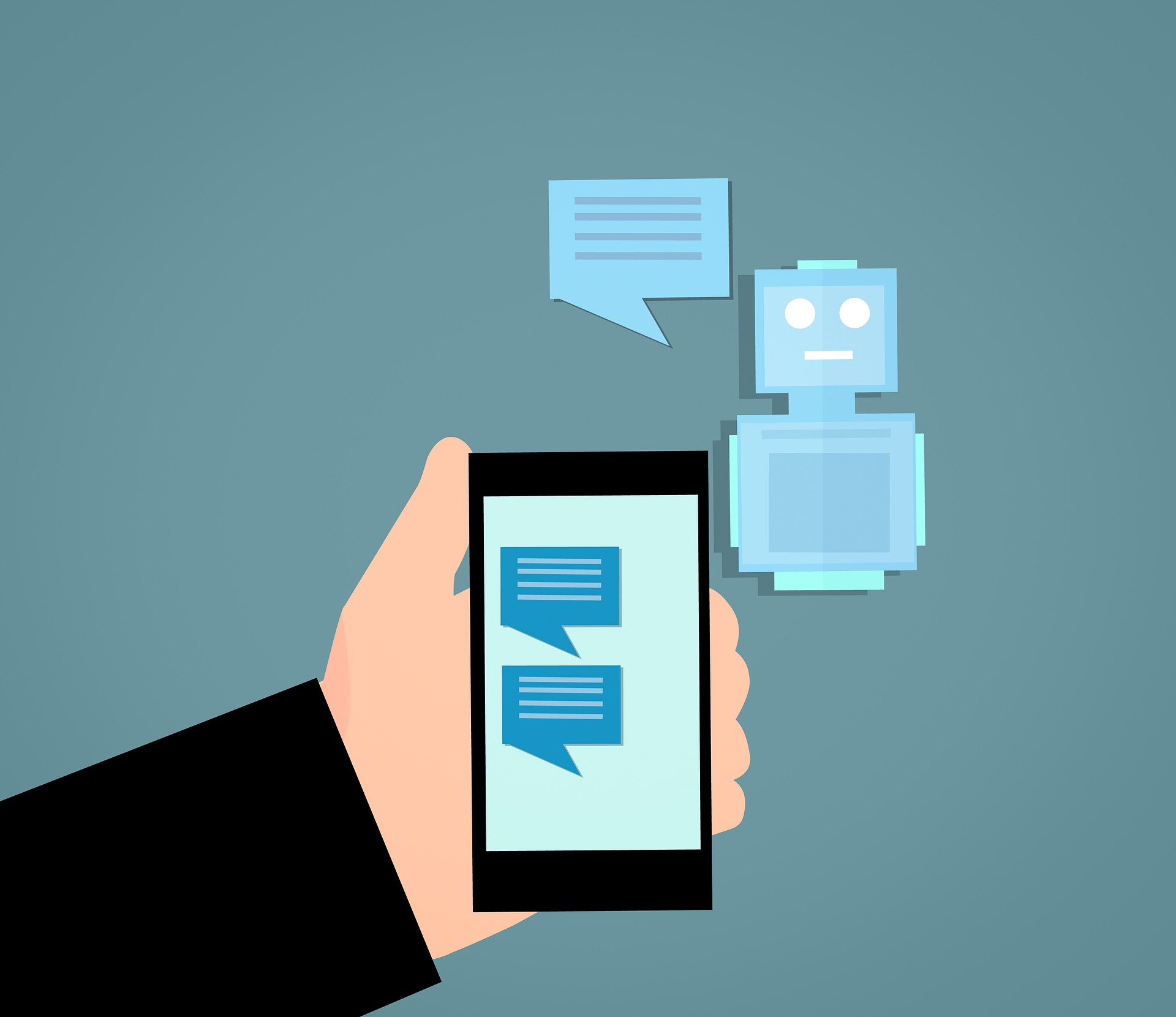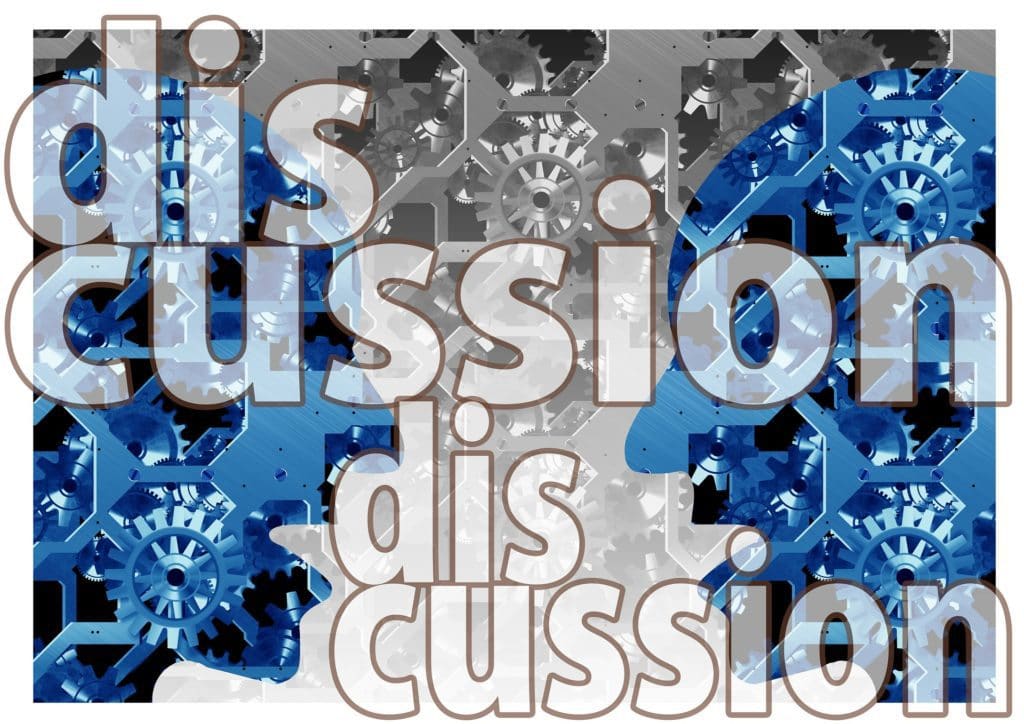So far, we’ve had to learn to interact with computers on their terms and limitations. To make as precise online search as possible we are required to know the optimal keywords, and still, we get millions of search results that we have to choose from. However, now with the emergence of conversational search and AI chatbots, things are changing. The demand for more human-like chatbots has resulted to significantly improved natural language processing and machine learning. We are now teaching computers to interact with us on our terms and limitations.

Chat Messenger – The new platform
Messaging apps have overtaken social networks surpassing social media in the amount of monthly active users. In 2017, Facebook Messenger had 1.3 billion monthly active users. As the trend keeps growing it is only natural for tech companies to develop new technology and services for the largest platform.
The chatbot technology is going to a direction wherein the future bots will become the “new apps,” and personal assistant will become the new meta apps or browsers. Eventually, everything will be available inside just one messaging app. You’ll be able to bring a chatbot directly into your chat for information search, brand interaction, or any other daily task. One of the great benefits of the conversational interface is that you can interact with several departments from one interface.
Mainly messaging apps are used for chatting with friends and family. Particularly, the younger generations are always texting with each other. Many of them interact through their phones, even more so than in person.
In the US 73.7% of 18-34-year-olds communicate digitally more than in person, on any given day, according to a survey by LivePerson.
By providing services in their favorite messaging platforms, companies have a much better chance of reaching this section of consumers.
It is evident that chat messages are preferred over emails as a marketing tool, among younger consumers. A conversational user interface offers a more natural way of interaction, which makes it a stronger tool for customer engagement for brands.
According to the LivePerson’s online survey, majority of younger consumers (18-34-year-olds) across the US, UK, France, Germany, Japan, and Australia would prefer to automate simple tasks – such as making reservation (65.8%), checking into a hotel or flight (55.7), and ordering room service (55.9%) – than speaking with a person. The poll had over 3,200 respondents.
Searching through conversational chatbot
In many situations, a traditional search can be rather inconvenient. You might be looking for information about a product for the first time, and you have no clue where to start. Regardless of giving the search engine the most accurate keywords to describe the product, you’ll still receive millions of search results that you have to pick and choose from. Going through all the top links will take lots of time and effort, not to mention that the best fitting options for you might not even be in the top results of the search engine. Imagine being in a place where the internet connection is slow. Good luck with the search!

After experiencing that it doesn’t sound too bad to have a conversational search that can actually do the legwork of the search for you. A chatbot integrated into a messaging platform will ask the user for specific details to narrow down the range of options, making it easier to find the most appropriate information, products, and services. If you have a follow-up question about the previous topic, a well-designed bot will remember the context so you won’t have to repeat the same things twice. For example, if you ask ”How is the weather going to be today?” and after you get the answer you follow up with ”How about tomorrow?” the bot will give you tomorrow’s weather without asking for the context.
Chatbot assistant – More convenient than a customer service agent?
For some people, a chatbot can be easier to approach – when giving personal information like the size of body parts – than a human agent in a chat service. In general, collecting personal information from consumers with a conversational UI is quite efficient. It’s is way more approachable and interesting than filling a form on a website. It happens naturally and almost unnoticed as the conversation proceeds.
Chatbots aren’t just great at saving your time and saving you from the searching efforts. They also do an excellent job as personal assistants. When you have no clue on what kind of clothes you need for a special occasion, or you are about to start a new hobby, and you need some training gear, to begin with, a chatbot can give you recommendations for the best products available. If you have a rather strict budget, you can ask the chatbot to filter for cheaper options. A chatbot will guide the customer through the whole purchase process in a friendly and warm manner.
The amount of different possibilities that virtual assistant bots can do is endless. From helping with day-to-day tasks, like scheduling and reminding about upcoming events to ordering plane tickets and hotel rooms.
Who provides better service, humans or chatbots?
So far, having a human agent in a messenger service is maybe the most valuable kind of service that you can get. Just because humans can deal with customer problems that even the best bots won’t be able to solve. Moreover, a sense of empathy and ability to understand emotions and intentions is very much appreciated in the field of customer service.

Chatbots have their own benefits though, and the technology supporting them and artificial intelligence are improving exponentially. Chatbots can deal with certain tasks way better than a human agent can. Tasks like answering simple and often repeated questions. A chatbot finds information much faster than a human and can provide wide, comprehensive answers in the blink of an eye. Chatbots don’t need to sleep either, so they work day and night. What is more, the benefits a company gets from having a chatbot service will pay back the costs of the bot immensely well.
AI and chatbot capabilities
Services are becoming automated rapidly, and it is no wonder since the capabilities of chatbots and artificial intelligence are constantly expanding.
As long as computers have existed, we have been using language that is search engine optimized. We’ve used keyword combinations to search and to create content that can be easily found with this system. Now with the natural language processing, we can use our normal, natural language when interacting with conversational UI.
Natural language processing enables chatbots to understand our language. They can even be taught to understand different slangs and dialects, as well as to interpret users’ intentions and present the right answers despite the possible typos made by the users. Sentient analysis enables chatbots to read our emotions and moods from the written and spoken the language. It makes them warmer and more humanlike chatting partners, which is exactly what the users want.
What makes AI so brilliant is its ability to self-learn from the past experiences. Yes, an AI-powered chatbot with machine learning can indeed use the data from its previous conversations to respond to queries it couldn’t handle before. The more information a chatbot is fed, the smarter it becomes. A chatbot can utilize the user data accumulated from all the previous interactions, thus giving each user even more personalized service.
The pros and cons of voice user interface
Most of you have probably heard already about the famous forerunners of voice UI technology, Amazon Alexa, Google Home, Siri, and Cortana. They are voice-controlled personal assistants that are capable of all the tasks that chatbots can do, which don’t require visual elements. The utility of these devices lies in the fast, natural, and effortless usability that speaking gives. However, despite all the hype that they have received, they are still far from perfect in their usability.
According to research on “Design guidelines for hands-free speech interaction,” many users had issues because of the lack of feedback from the speech interface. Without clear guidance and signals, the users didn’t know when was their turn to speak, how to talk with the VUI, and how to tell whether the device understood them or not. Neither were they aware of what kind of functions the device was capable of.
Another problem with the ease of use was the lack of control over the VUI. Having a voice as the only input method complicates some of the aspects in the interaction. Likewise, having a voice as the only output, raises the cognitive load of the users, making it difficult to receive, understand and remember long pieces of information at once.
Other notable issues were the lack of transparency and the discomfort of talking in public. Users were unsure what information was being collected, due to the lack of transparency. Many felt uncomfortable talking loud to the device in public, and some were concerned about the privacy of the shared information since anyone within earshot could hear.
Even if the VUI still has its weaknesses, it has improved drastically in the past few years, and in time we are going to see much more advanced and less flawed solutions.
Conclusion
Conversational UI and chatbots are changing the way we search online and the way we interact with brands and each other. The content creation for SEO is going to change as the traditional keyword search is going get out of the way of natural language search. Giving away personal information will change from filling up boring web forms to having smooth conversations with chatbots.
Email marketing will slowly die, and messenger marketing and bot marketing will take its place. Conversational chatbots are more approachable, more efficient, and most of all, they bring more personalized service to users, thereby engaging customers.
Based on the direction that the conversational UI trend is currently on, and the word of the majority of the people on the tech industry, it seems more than likely that messaging applications will become even bigger and more significant than they are already. The future platform where all the interactions between friends, families, and services will happen, is going to be messaging applications. All in one and navigated through the conversational user interface.


